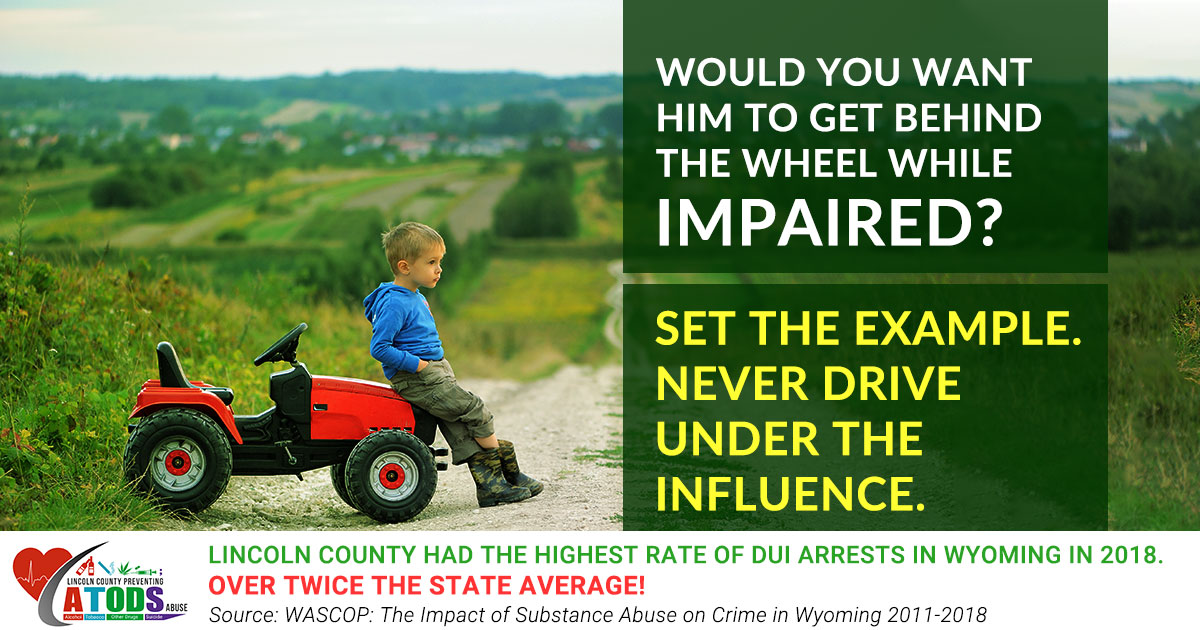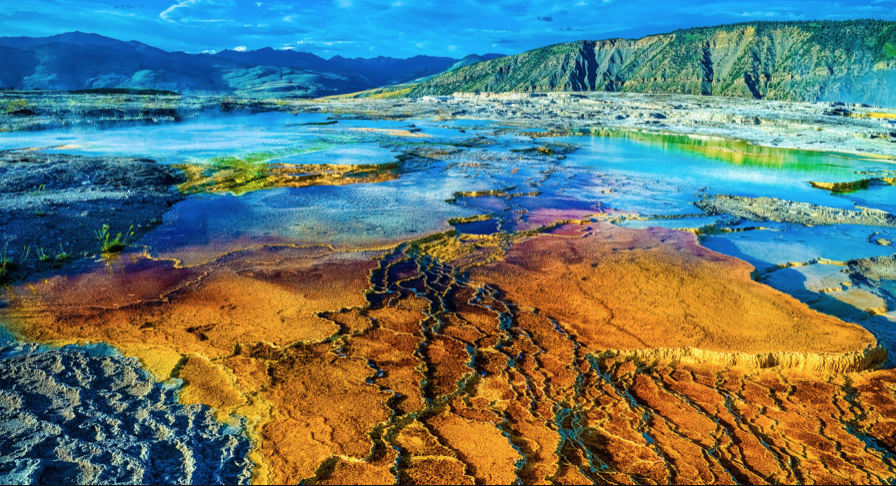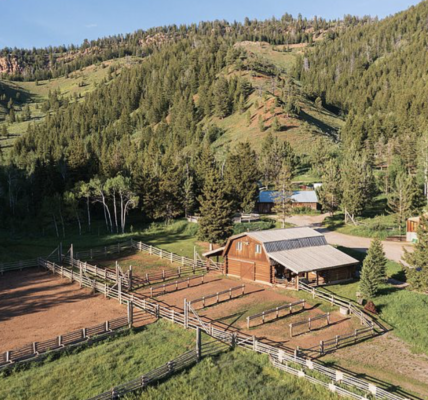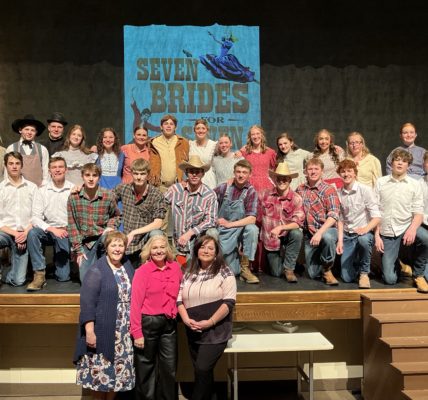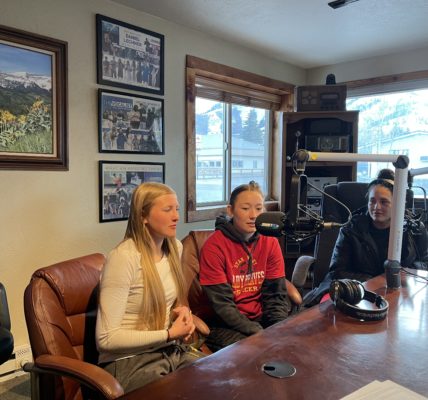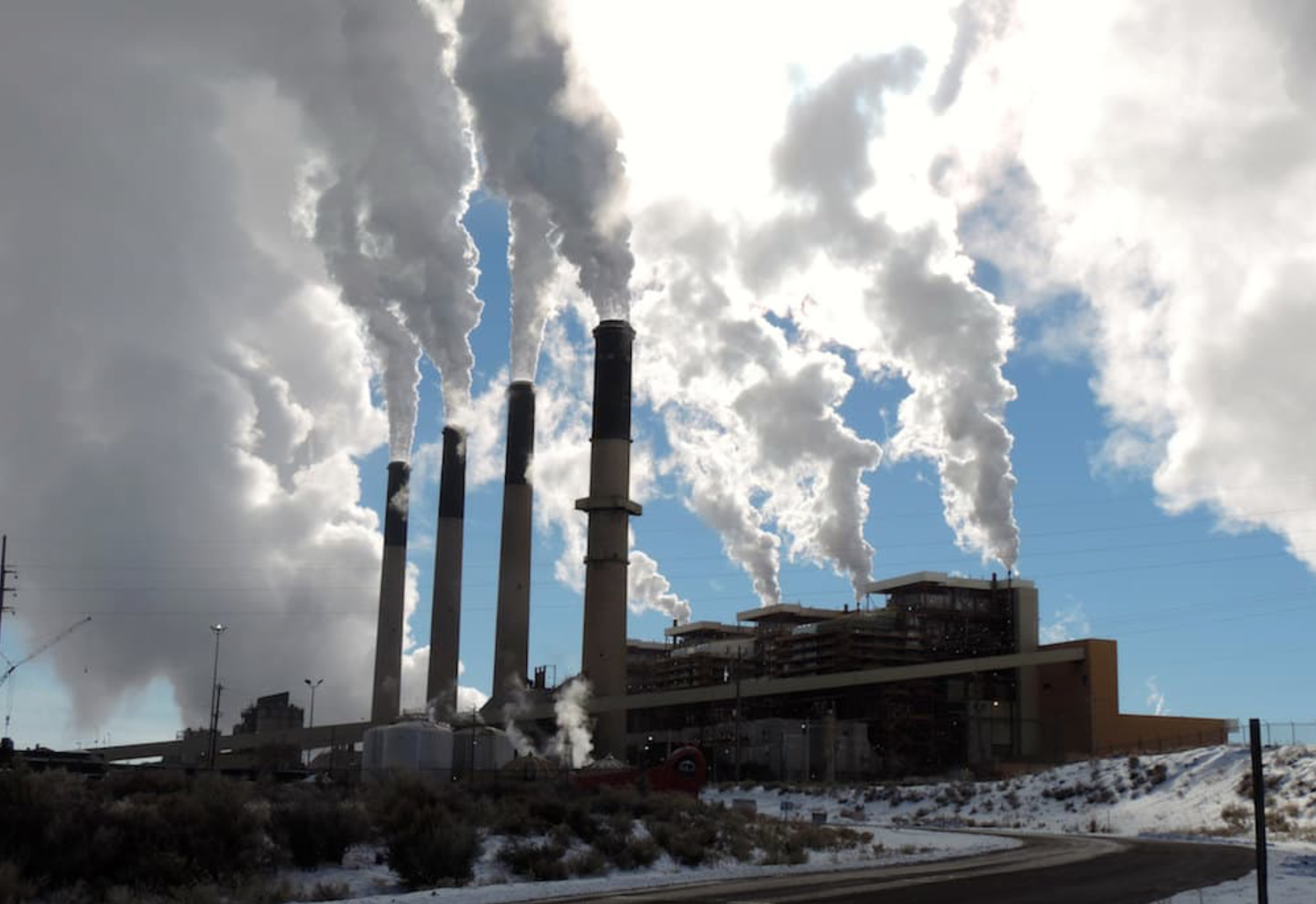By Mike Koshmrl
Jackson Hole News&Guide
Via- Wyoming News Exchange
JACKSON — Grand Teton National Park’s new superintendent felt the inflection point come the last week of April.
Visitors to the 310,000-acre park that Palmer “Chip” Jenkins oversees seemed to start showing up, drawn to see the dramatic spine of mountains topped by the 13,775-foot-high Grand Teton and the wild things living beneath them. Suddenly it felt more summer-like, and less like the sleepy “shoulder seasons” of old in Jackson Hole.
“You get to a point in time in the spring where you feel the momentum shift, and on Monday it was very distinct,” Jenkins said during a April 28 walkabout down Teton Park Road.
The signs of summer were marked by seasonal ranger corps coming onboard for the summer about to begin. Utilities were turned on. The road Jenkins strolled down soon would be full of vehicles, not pedestrians and cyclists.
Jenkins didn’t know it at the time, but the mass of tourists was congregating in numbers never before documented during April. Nearly 88,000 visitors treaded into Teton Park that month, a 32% increase over the 2019 count and easily a monthly record. (The park was closed in April 2020 due to COVID-19.)
Jenkins expected it. Hotel and campground bookings and other data coming from the tourism industry point to a record-busy summer ahead. There were internal indications as well: Teton park’s website visits were way up.
“I think it’s about a 40% increase in people going to our travel planning pages,” Jenkins said. “Over last year, and last year was up from the previous year.”
Unprecedented droves headed for the Tetons aren’t an exception but more of the rule during 2021 in terms of interest in seeing wild, open spaces in the West. After an initial suppression effect from the novel coronavirus, that’s just what was documented in neighboring Yellowstone National Park during the second half of 2020: record-smashing September and October visitation. There’s more of the same so far in 2021.
“We just got April’s numbers here for Yellowstone,” Superintendent Cam Sholly told virtual attendees of the Charture Institute’s 22 in 21 conference on May 12. “Busiest on record.”
Specifically, some 67,500 people came to Yellowstone to recreate — a 40% bump over April 2019’s total.
On the very first day Yellowstone’s interior roads were open to automobiles, gate counters detected an 88% increase in traffic over the same day in 2019. The unparalleled opening day interest in coming to the park aligns with what Sholly anticipates in the months ahead. Trepidation about domestic travel has dissipated, and a new type of visitor that’s a by-product of the COVID-19 era is raring to go see the world’s first national park.
“This will be a record year,” Yellowstone’s superintendent said.
Sholly’s best guess is that between 4.5 million and 4.7 million visitors will come this year — which would mean a 12% and 17% bump in people, and vehicle traffic, from the last full year data was available in 2019. The prospect of that kind of increase comes on the heels of a string of record breaking or near-record visitation years, when crowds amassed for events like the National Park Service’s centennial anniversary (2016), a total solar eclipse (’17) and to take refuge from people-packed cities during a worldwide pandemic (’20). While surveys have found that visitors are still generally enjoying their Yellowstone experience, some parts of the park are “literally being overrun,” Sholly said, like the Midway Geyser Basin, Norris, Canyon and Mammoth.
Some steps are being taken to alleviate congestion. The layout of how people flow through Midway Geyser Basin, featuring the brilliantly colored Grand Prismatic Spring, will be reconfigured.
A pilot program will chauffeur visitors in driverless, electric shuttles in the Canyon area. A study is being launched that will examine using a bus system at Old Faithful.
“It can’t be a light switch, but if we see 4.5 million visitors this year we’re going to need to have a different conversation, perhaps, than we have had in the past,” Sholly said.
Inevitably, totally full campgrounds in the national parks and the increasing cost of lodging in gateway communities is going to push more people to nearby national forests like the Bridger-Teton. Parts of the forest that offer free camping and Teton views are already clearly overrun. Supervisor Tricia O’Connor, who also spoke at the tourism-focused 22 in 21 conference, recalled how during 2020 her front-line staff dealt with rampant camping outside of designated areas, hundreds of unattended campfires, hiking trails with use that almost doubled and human feces and toilet paper everywhere.
“Last year was really tough on employees, to be dealing with this every day,” O’Connor said.
Some residents are welcoming the increased flow of people coming to see Wyoming’s natural wonders. Speaking to the 22 in 21 attendees, Jackson Hole Chamber of Commerce President Anna Olson pointed out how 2020 was a bust, looking at the year across the state.
“Last year was not good for Wyoming tourism,” Olson said. “We were down 25% in terms of number of trips, 25% in terms of spending and tax receipts.”
Olson made the point that the big gains in spring and fall visitation has its benefits. The seasonality of employment in the valley is tough on people whose rent isn’t going away, she said.
“This year-round economy is something that is better for our community,” Olson said. “Evening out the peak-and-trough, from a tourism economy standpoint, is a good direction for our community. It’s definitely not a negative that we can push up those off seasons a little bit to allow for a continued economy.”
But many Jackson Hole business owners are leery of stretching out the busy summer season. The Jackson Hole Travel and Tourism Board surveyed 200 people in the business community about this exact topic earlier this year and found that 78% of respondents thought there was too much tourism in summer, which wasn’t a shock. More surprisingly that same sentiment carried the majority throughout the year, Travel and Tourism Board Chair Brian Gallagher reported to the 22 in 21 crowd.
Some 31% of the business community perceived too much fall tourism, compared with 18% who desired more. In winter 39% of survey respondents already thought there were too many tourists and just 16% wanted more. Spring was the exception: Business owners wanting more tourism outnumbered those who already perceived too much, with a 35%-to-20% split.
“This was our business community really saying, ‘This feels a little bit hot,’” Gallagher said.
Those results gave the Travel and Tourism Board more license to devote itself to tourism management rather than promotion. Recent summers provide evidence that the natural resources that make Jackson Hole a draw to 4-million-plus people annually are vulnerable to too much popularity and overuse.
“I think that all these trends will continue, honestly,” Gallagher said. “People will continue to be interested in the outdoors and natural spaces and national parks. We just need to remember that tourism brings us so many blessings, but it also is something that needs to be managed and something that frankly can be ruined as well.”
Managers of the Greater Yellowstone Ecosystem’s wildlife and wildlands don’t yet seem too worried about overuse of the system as a whole. O’Connor said that while parts of the Bridger-Teton near the park and destinations like the Wind River Range have seen tremendous gains in use, many other parts of the 3.4-million-acre forest aren’t being overrun.
Yellowstone’s Sholly pointed out that in hiking 208 miles in his park last summer, he counted just nine people total more than a mile from the trailhead. He recounted the ecosystem’s myriad conservation success stories over the last century: restoring bison and large carnivores like grizzly bears, wolves and mountain lions.
“It’s by no means where it needs to be, and we can’t be complacent,” Sholly said, “but let’s not act like 4 million visitors per year is crashing the ecosystem. It’s not.”
Grand Teton’s Jenkins, speaking to the 22 in 21 attendees, built on the thought and remarked how the Greater Yellowstone Ecosystem remains an ongoing experiment.
“It was not preordained that this ecosystem would, as Cam [Sholly] said, be intact and actually recover from where it was decades ago,” Jenkins said. “And the outcome of this experiment is not preordained, and will require our continued diligence and work.”
